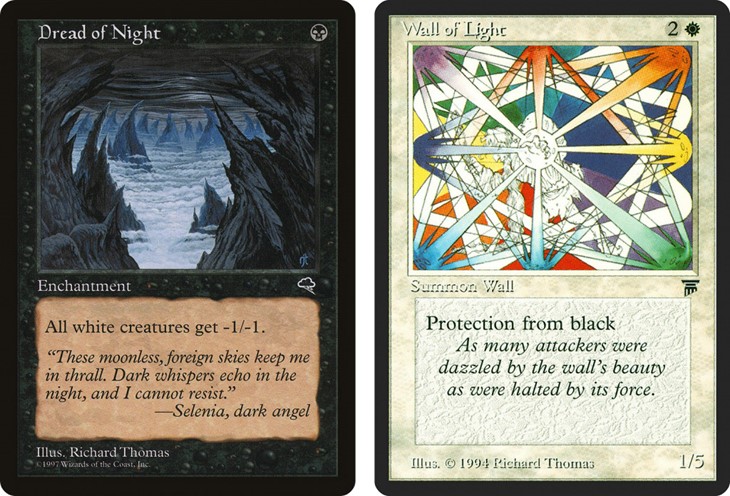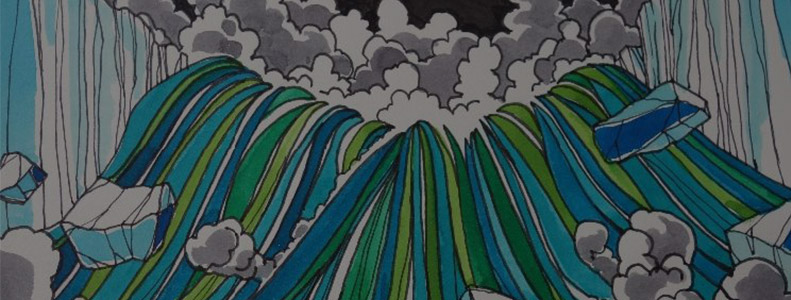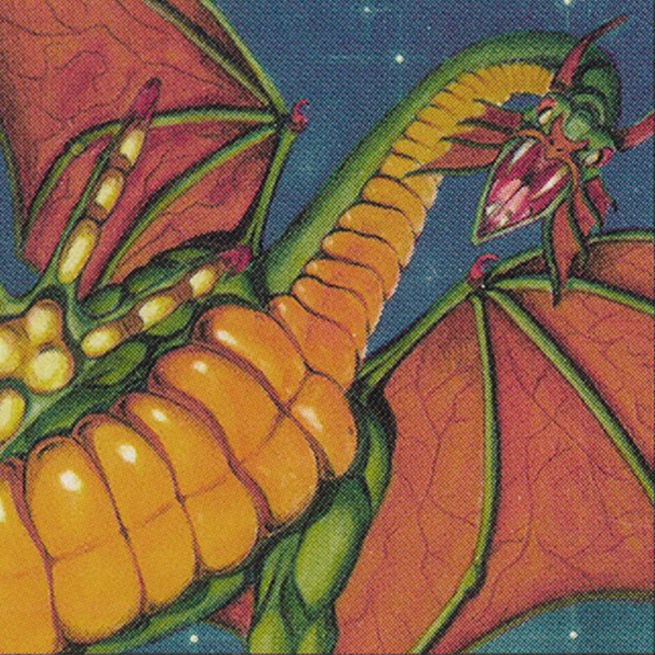Welcome to the 31st interview for our artist interview series!
For today's interview we talked with Richard Thomas, one of Magic's original 25 artists.
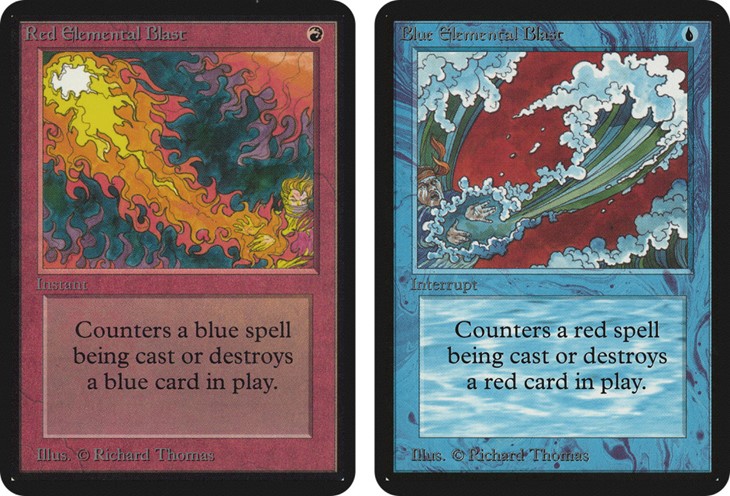
Hi Richard! How did you become an artist?
In the big picture sense, I was always an artist. There were drawing on my bedroom walls where I grew up from when I crawled over with a crayon. Later, in high school, I made the decision to pursue art as a career and with the fantastic art department in HS as a great start, I got my BFA and MFA degrees from Tyler School of Art.
And how did you start working on Magic?
Like a lot of us "classic" Magic artists, I was friends with the gang at Wizards of the Coast - in my case from having worked with them on different projects before MtG.
One day, Lisa Stevens called me to see if I'd like to do "card art" for a new card game they were creating. I was intrigued because I'd always loved tarot and other cards where art was important to the look, but had no clue about this whole collectable card game thing they were doing.
Gotta remember, Magic created this whole genre of gaming - before the first Magic release, there was nothing like it in gaming.
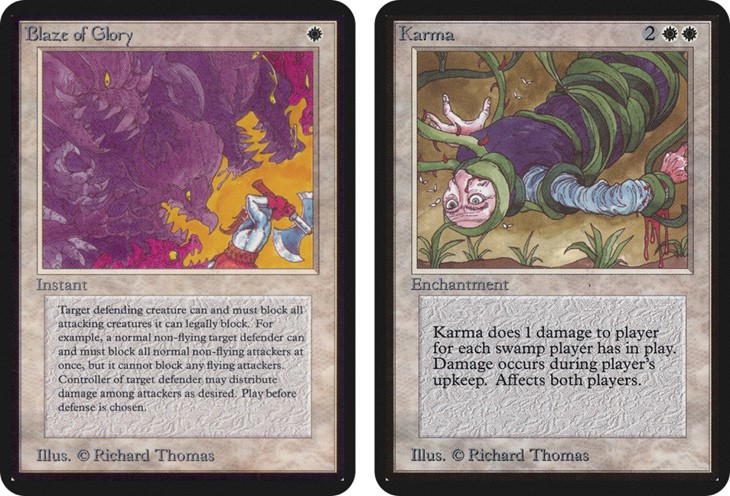
What was your first card you painted?
Wow, hard to remember, but I want to say Red Elemental Blast was the first one I finished from that first batch of cards.
When did you realize the game was a huge hit?
I knew WOTC had something that was working that first Gen Con it debuted, but then it just kept going! I was talking with Jesper and Lisa and the gang over there as things exploded and there was more and more crazy amounts of demand for it, so they pretty much told me how things were going up and up.
How did Magic impact your career?
Well, unlike a lot of the other original Magic artists, illustration was what I did in addition to my regular job as the lead visual person at White Wolf. So, for me, Magic didn't have a lot of direct impact, but instead was an awesome added thing to my life that was really outside of what I was normally known for.
I remember the first time I was attending a gaming convention with White Wolf, talking with artists and printers and all that art director stuff, and I kept hearing my name being whispered back and forth.
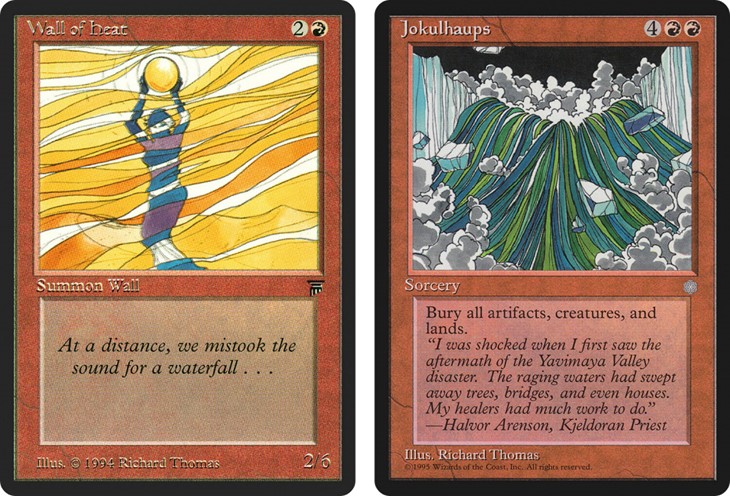
Which was really strange. I turned around and there at the edge of the White Wolf booth were a group with Magic cards in their hands, and they wanted them autographed! Which was also strange, because that had not happened to me before.
But they were very nice, and I signed them and went back to what I was doing. Way before autographs, and alters, and art on the back of cards, and everything we do now.
What Medium(s) do you work with? Can you give us a brief description of your painting process for Magic?
With the original Magic cards and for a couple of years, I used blacked ink to create the line art, and Dr Martin's Dyes to do the watercolor painting. I used those dyes because the colors were very intense, and I had made a deal with Lisa and Jesper that I could play around with that technique for a sort of stained-glass effect.
Later, I began creating the card art with acrylic paints as I'd pretty much wanted to paint vs draw and paint in - if that makes any sense.
For the original style, I'd do a thumbnail pencil sketch, then redraw that freehand on the bristol board surface. Very much all line, no shading. (And sorry folks, to the best of my knowledge I do not have any of those little thumbnail sketches.)
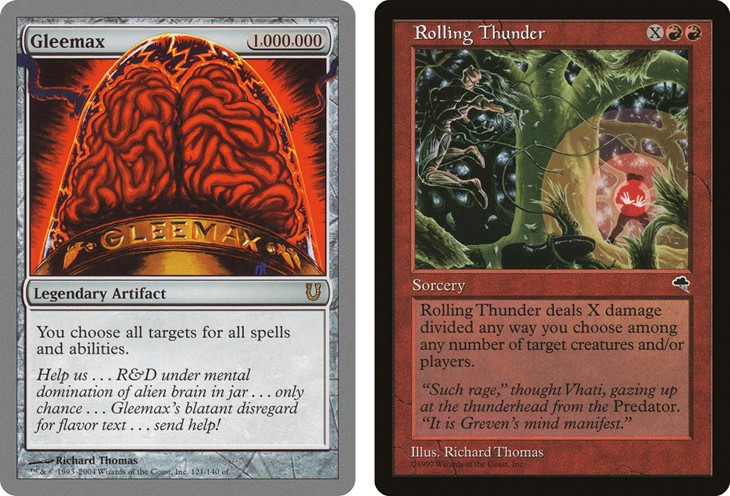
Then, I'd ink the lines with very deliberate thicknesses to create a sense of space. Sometimes I'd wait until I put in the color and then add more lines to add in details, or thicken borders.
The dyes were painted in just like watercolor paints usually are, although I usually blended them less together and let them sit next to each other. Particularly on the Walls.
For the later acrylic work, the sketching was a lot more involved, and then I'd get into it with the acrylics, going from darks to lighter colors in opaque layers.
What were the most challenging cards to paint and conceptualize?
I'm not sure any of them count as hard to conceptualize. For the original sets, we were given almost complete visual freedom, and I had a direction to go with visually, so while there were a few I had questions about that Jesper could answer, the whole process was really very fun and open.
Later, as the art direction became much more specific as the cards began to be about specific creatures, races, storylines, etc. the art notes became very heavy (I mean literally, as they used to send a package with these thick reference guides in them) and it became more challenging for me to be able to find the time to create them while doing my regular White Wolf job.
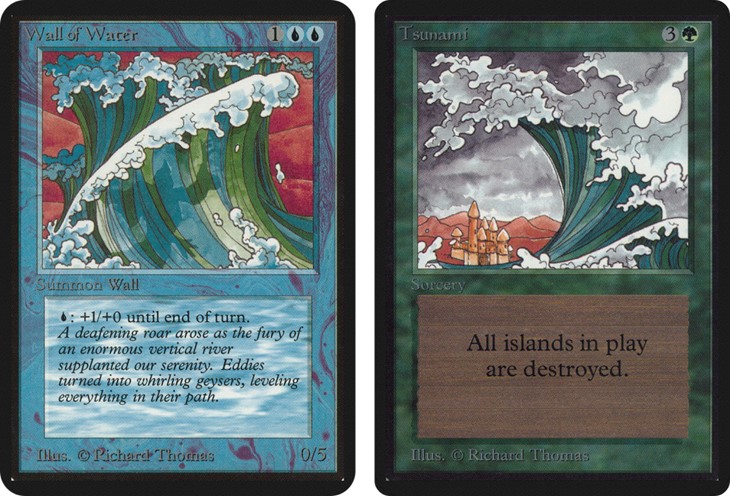
You have some of the game's most iconic waves ever to see print Tsunami, Wall of Water, Blue Elemental Blast they remind me of the Japanese painting The Great Wave, was this an inspiration? How did they come to be?
For Tsunami, it was definitely an inspiration. The piece was always supposed to evoke The Great Wave. The others, used a similar visual style, but more as elements that were lodged in my head as visual pieces to be included with very different images.
What I mean is, the foam and wave/water shapes and colors were supposed to touch on those in Tsunami, but add in a lot more that was unique to that illustration and the card. Since both of those cards were parts of series within that first batch - the two Elemental Blasts contrasted each other, Fire vs Water, and the Walls all had the elements in front of a caster - it made it a lot of fun to see how to really bring out the visuals that made them their own thing.
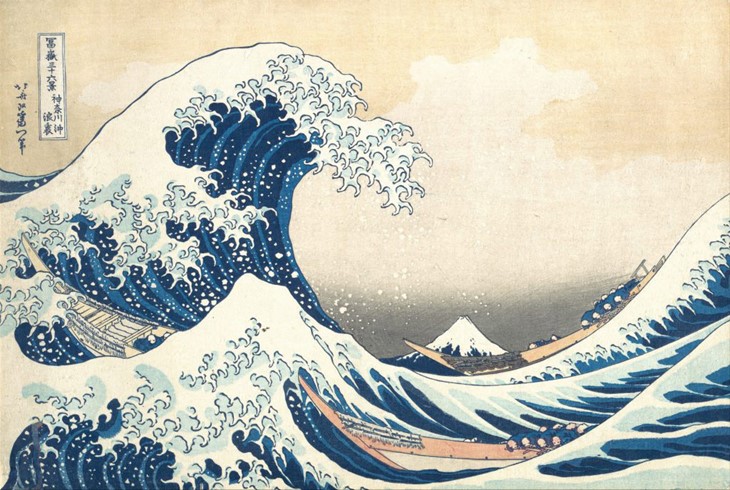
Of the work you made for Magic, can you name your favorite cards?
Gotta give some mention to Black Vise, of course, which was a card I really enjoyed doing. Not sure what that says about me, because a lot later on I really liked doing the Gleemax art. Tortured dolls and brains in jars! While still thinking about Black Vise's "Stuffy Doll", I really like the way the artwork came out for Leshrac's Rite. It's just one of those I still look at with satisfaction.
The Walls are a fun series, and almost all of my Ice Age pieces were pretty evocative. Although I think I'm most fond of the expression on
Gosta Dirk's face. I hear that fans are starting to like
Dread of Night again, which for me was important, along with
Lightning Blast, as it was with them that I really started to feel like the acrylic style was starting to work.
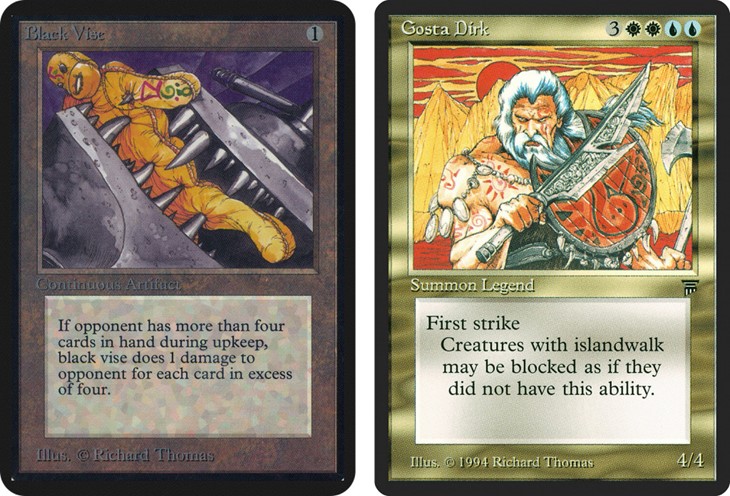
Where can our readers find more about your work?
After leaving White Wolf about seven years ago, I started my own Tabletop Role Playing Game company, called Onyx Path Publishing. So that's a good place to start.
If you want to see more recent art, and it is really, really hard to find the time now to illustrate with Onyx Path needing my attention, you can check out our Realms of Pugmire games which contain a bunch of the black and white drawings I did to help define the world of Pugmire - a fantasy world where dogs and cats have been uplifted to use tools and magic after man has mysteriously gone.
I'm also working with Mark Aronowitz and Givememana for Magic card signings and tokens and such, and you can find them on Facebook. And you can follow me on Twitter
